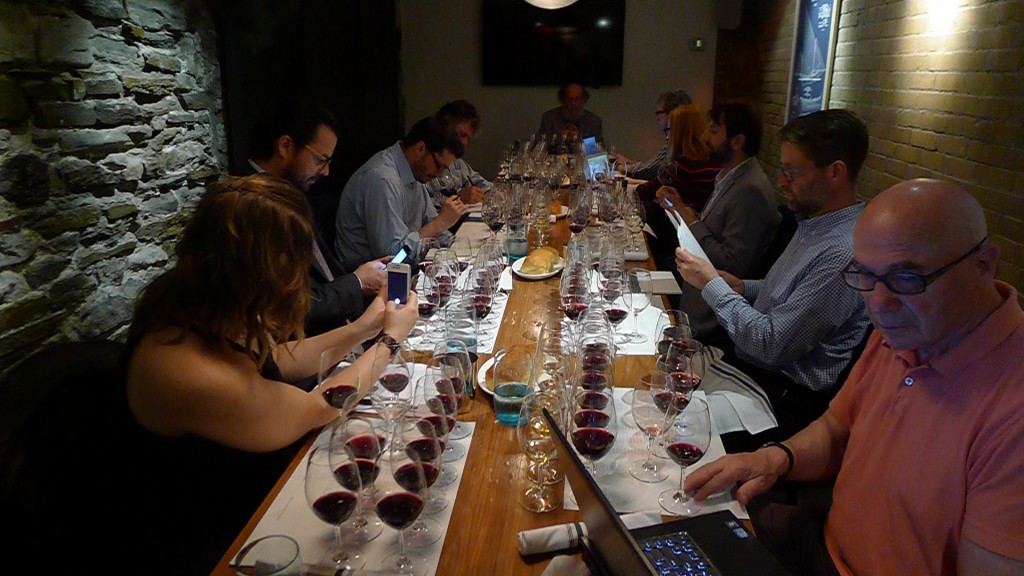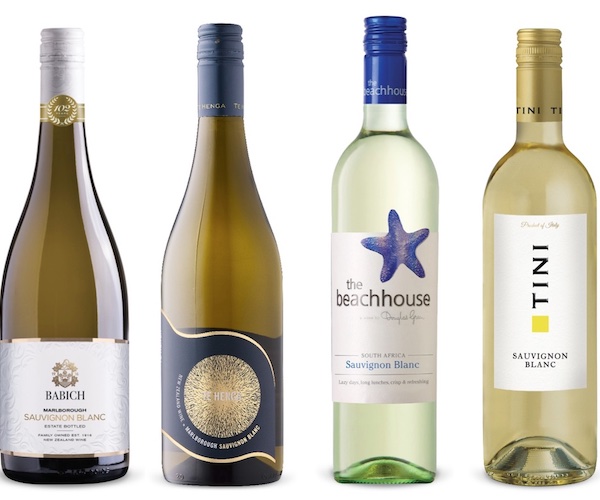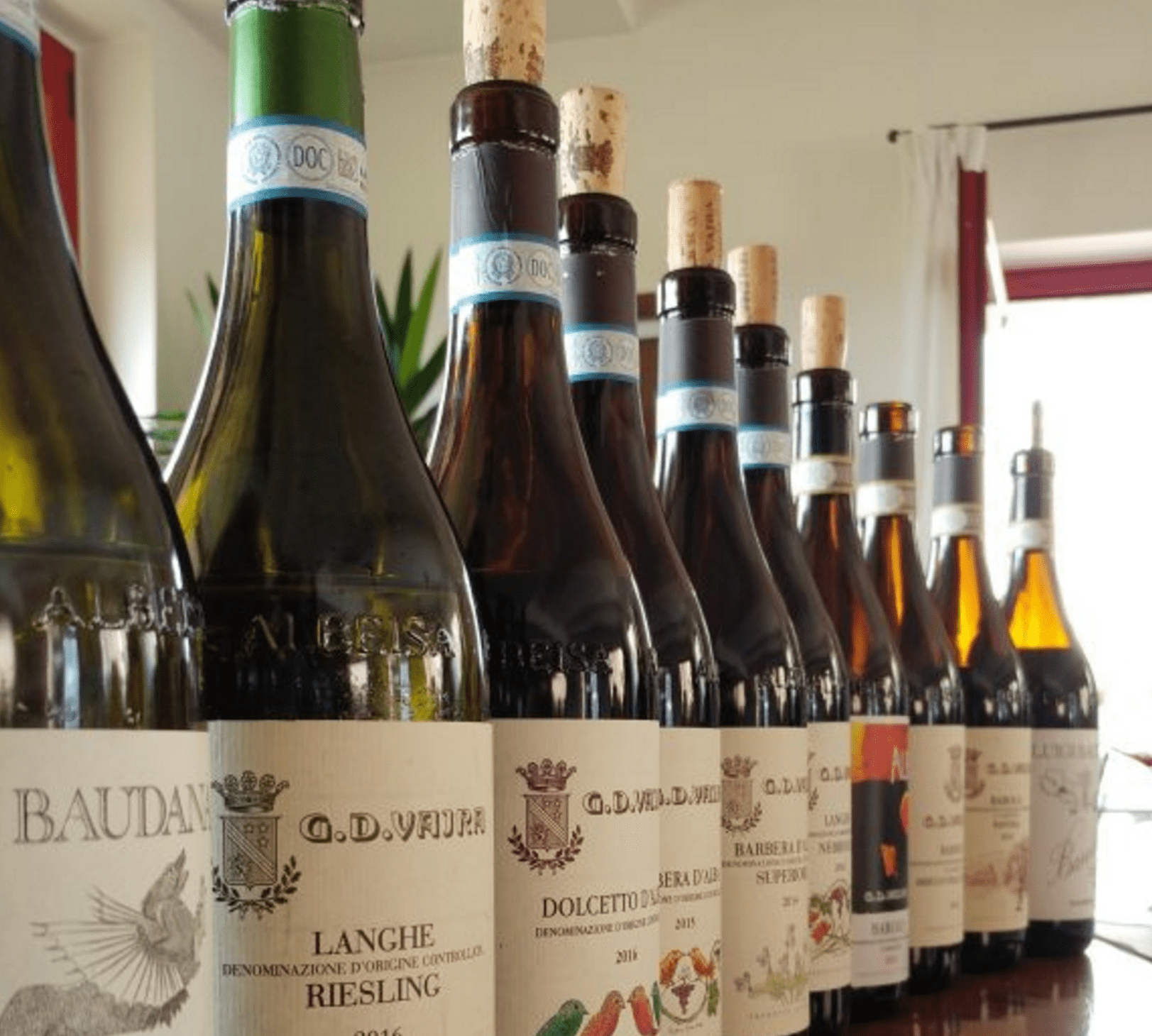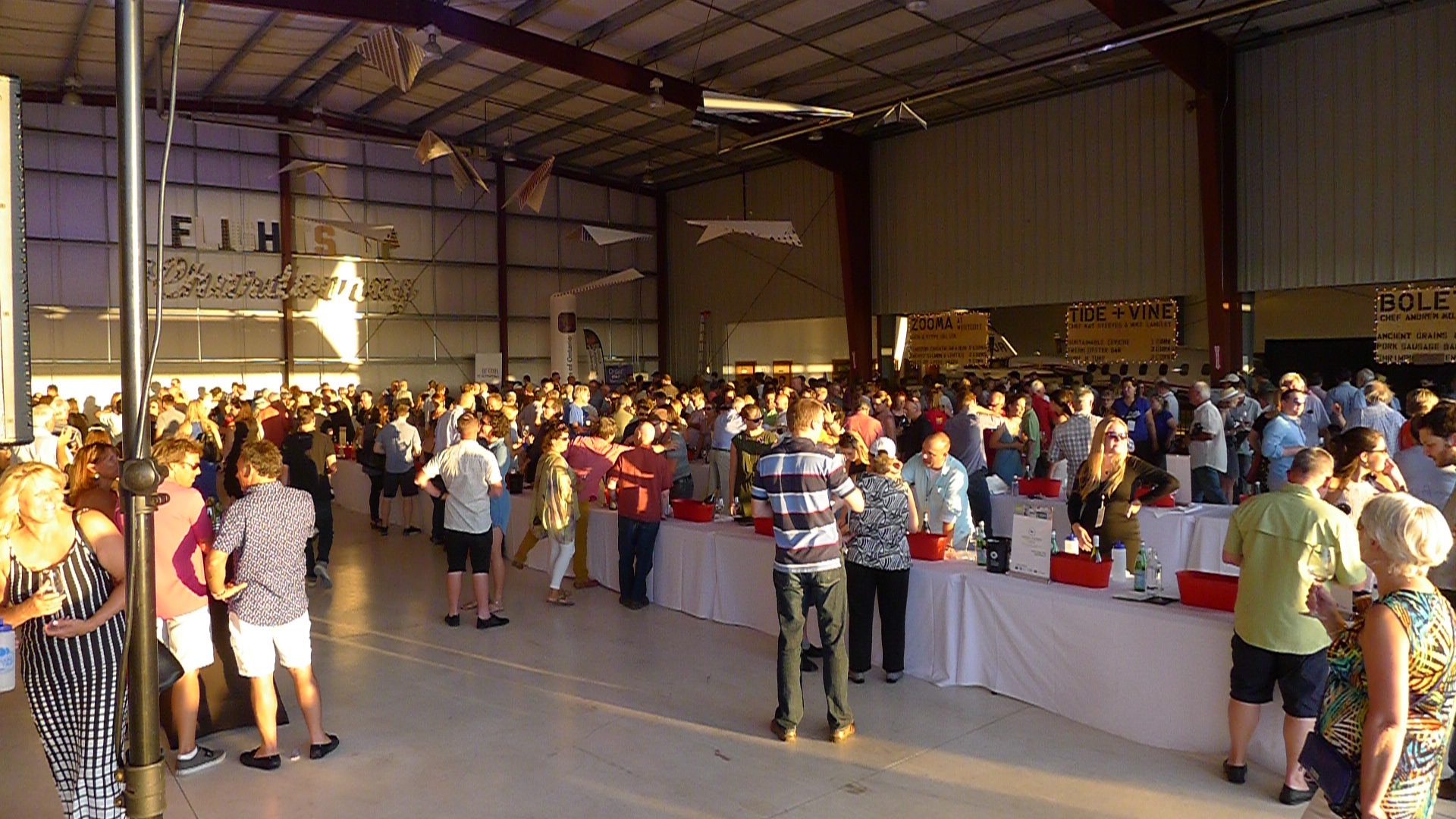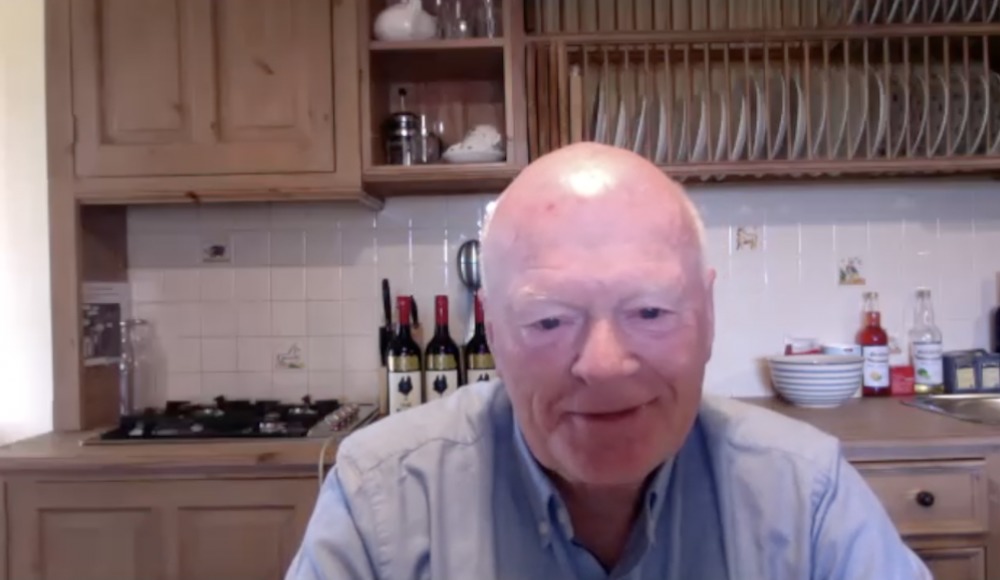It has to be said, those folks at Stratus certainly have a way with tastings. Although it seems as if it were only yesterday that we were tasting the winery’s 2010 single varietals at Toronto’s Momofuku Daisho, that particular event took place some years ago!
This time around a small group of us wine writers found ourselves in the basement private room of The Chase Fish and Oyster for a studied celebration of 10 years of Stratus, and it has certainly been one hell of a fascinating journey.
As Winemaker J.L. Groux led us through a tasting of Stratus White and Red from 2005 through to the current 2012 releases, he spoke of the winery’s commitment to their assemblage wines, and a philosophy that hasn’t changed since day one.
Although Stratus have wowed many hearts and minds with their myriad aforementioned single varietal bottlings, I strongly believe that it is with their flagship Stratus Red and Stratus White that they show the true potential of both their Niagara-On-The-Lake estate vineyards as well as their skilled viticultural and winemaking team.
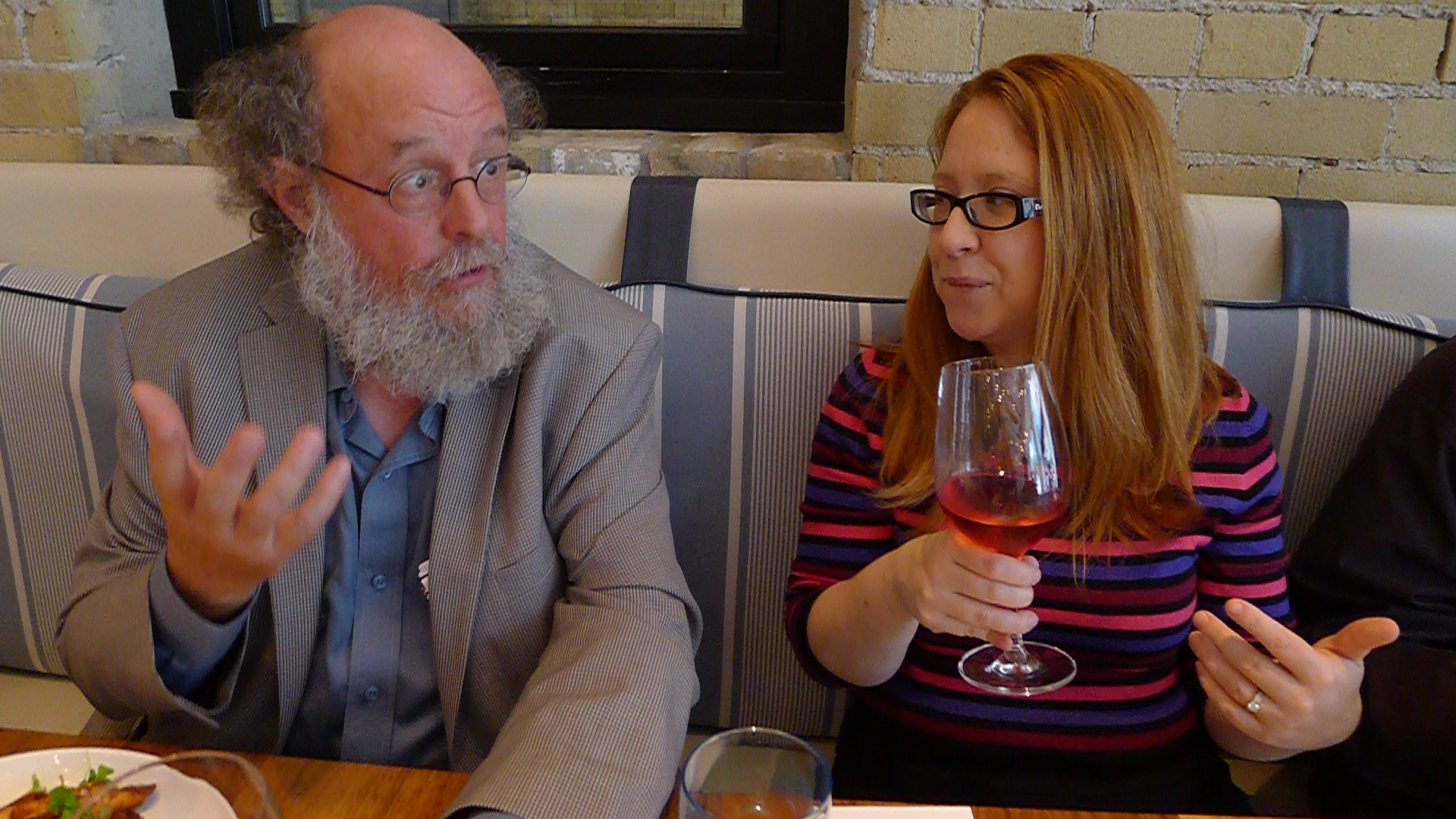
Sommelier Sara D’Amato quizzes Winemaker J.L. Groux over a spot of lunch at The Chase Fish and Oyster accompanied by some of the new Stratus rosé.
The 62 acre estate’s vineyards have gone through some substantial changes in composition since they were originally planted way back in 1985 (Stratus purchased the property in 2000). With a replanting of some two thirds of the vineyards in 2001, Malbec, Sémillon, Syrah, Petit Verdot were added to the mix. Viognier joined the party in 2004, and then Tempranillo, Tannat, Sangiovese, Mourvedre, and Marsanne (and a touch more Petit Verdot) made an appearance in 2006. 2014 saw some sub-grafting from Semillon to Chardonnay, a wise decision after the bitterly cold winters that had taken their toll on Semillon vines across the region. This was followed by some recent sub-grafting of Mourvèdre and Syrah to Cabernet Franc.
Such changes in vineyard composition have obviously been reflected in the cépage of the core wines. Whilst Groux has been given a wider palette of varietals to draw from, there has always remained an unwavering commitment to producing the very best wine possible in each vintage, wholly embracing the traditional philosophy of assemblage wine.
As Groux takes us through the morning’s wines, noting the various eccentricities and minutiae of the various vintages, it becomes obvious that the man has a deep connection to each and every one his vinous “children”.
As we taste the 2012 and 2005 Stratus White in parallel he notes that both were from warm years and that both contain a high percentage of Chardonnay fruit in the blend. And these facts certainly display themselves in the glasses in front of us, the Chardonnay component undeniably coming to the fore in both.
When we speak of the inclusion of Gewürztraminer over the years, Groux recalls this aromatic grape making up a third of the Stratus White in 2000, going down to 13% in the 2005, and then along with Riesling being slowly phased out of the wine, as the wine became less aromatic varietal-focused and more full bodied; The 2012 vintage was a Sauvignon Blanc/Chardonnay/Semillon/Viognier composite.
On the subject of lees contact, Groux explains that he feels it integral to white wines that aspire to any kind of longevity. He believes that a Chardonnay will usually give you a seven to ten year lifespan, but with some serious lees contact, and perhaps a touch left in bottle, this can be extended, in some circumstances, to an staggering 20 years.
At one point Groux is asked about his thoughts on the use of oak, and if this has changed throughout his years with Stratus. He gives out a jolly laugh, pauses to think (or perhaps for dramatic effect), and laughs once again.
He draws our attention to the 2005, explaining that at the time, he had the budget to order some beautiful new French oak, but what with the vintage’s yields being so much lower than had been expected, the wine, in hindsight, saw more oak than he would prefer.
As the vines garner some age, Groux has been reigning in the oak influence somewhat, although he still feels that it is an essential component of the more ageworthy of his wines, the integration coming through sufficient time in the bottle. He also tells us that over time he has learned that oak influence is less to do with the wine’s time in barrel and more to do with the composition of said oak. With this in mind he uses exclusively Burgundian cooperage for his white wines, and for the reds mostly Bordeaux. Having often found Stratus’ oak usage to be somewhat polarising, it was most interesting to hear him speak to the subject, explaining what he has come to learn over the years.
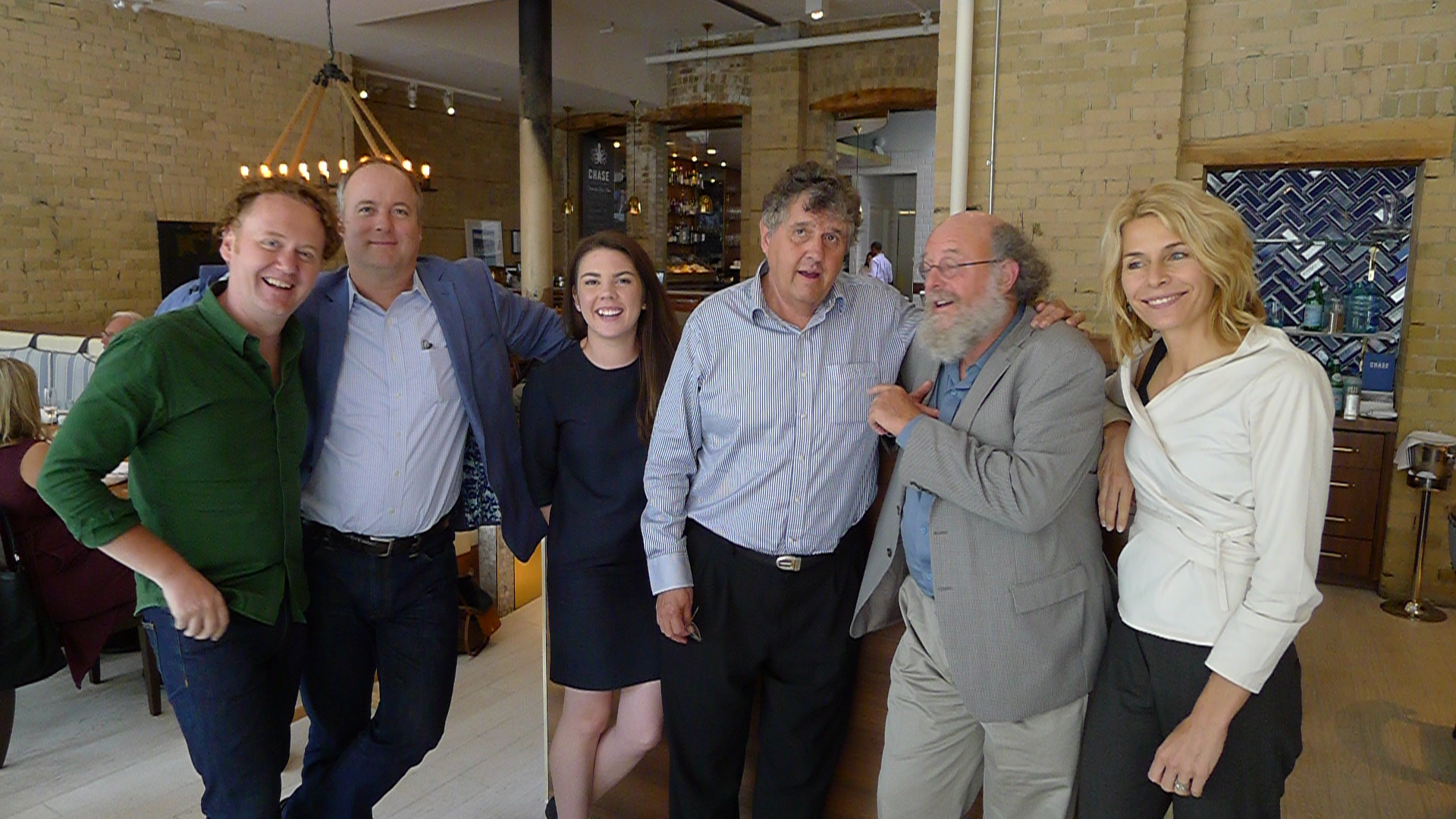
The obligatory after-lunch group shot of Stratus and friends. (Left to right: GFR’s Jamie Drummond, Charles Baker, Nadia Skorupski, Michael Vaughn, Winemaker J.L. Groux, Suzanne Janke)
As we move through the red wines Groux tells of of his feelings about the various components that have made up Stratus Red over the past decade.
On the subject of Petit Verdot, Groux recalls his very first wine being a Petit Verdot, and how he has grown to love the varietal, citing its amazing winter-resistance and consistent quality year after year, and proclaiming that he feels it does better in Ontario than in Bordeaux. Stratus usually pick their Petit Verdot around the same time as their Gamay. Saying all that, he does admit that tempering the grape’s inherent acidity in a cool year can be rather challenging, as the fruit has to get up to 26 brix before harvest.
Way back in 2002, Gamay was a major player in that vintage’s assemblage, but Groux explains that he has been slowly moving away from its inclusion in the Red blend. That’s not to say that he has given up on Gamay though. Expect to see the 2014 Stratus single-varietal Gamay with less brix at harvest, a shorter maceration, and only one year in old French oak barrels.
When it comes to Cabernet Sauvignon, Groux states that in a warmer year it can achieve levels of complexity that one cannot find in Cabernet Franc. Indeed Stratus’ largest plantings were of Cabernet Sauvignon but these 9.5 acres are being reduced to around 6 or 7 acres as it is sub-grafted to the more consistent Cabernet Franc, as Groux feels that Cabernet Sauvignon is only capable of making great wines every three or four years.
Speaking of Cabernet Franc, Groux. explains that he used to pick the grape with much lower brix, but today we’ll see much more black fruit in the Cabernet Franc wines due to the later harvesting. When Stratus first started this longer hang-time with Cabernet Franc, his neighbouring wineries “leaned over the fence” and called him crazy, as they were harvesting their fruit as early as November. Whilst Wine Spectator’s Matt Kramer (for the record, a gentleman I rarely agree with) has stated that Ontario should be making more Loire style Cabernet Franc, Groux tells us that their customers say something quite different.
Speaking of the many other more experimental varietals that may occasionally make up the “seasoning” of the Stratus Red, Groux shows particular enthusiasm for Malbec (obviously a favourite of Paul Hobbs, a consultant and confidante of Groux since the 2009 vintage), Tannat (one of Groux’s favourites amongst the newer plantings, even picked at 28 brix it shows tremendous acidity), and Sangiovese (“It handles the winters extremely well… and produces a lighter, red fruit, floral wine”). He admits that he’s had a little bit more trouble with his Mourvèdre and Tempranillo, giggling whilst telling us “but then everyone has trouble with Tempranillo”.
J.L. Groux is obviously a Winemaker who finds so much satisfaction in his job. His passion for making zero-compromise Niagara wines is so much apparent in the way he speaks of both his successes and challenges throughout his years at the helm of Stratus. Humble, modest and thoughtful, but with a genuine zeal and drive for excellence that is true rarity, you can see that Groux is so much looking forward to seeing what the next decade has in store for Stratus and the phenomenal wines he makes there.
As inevitably happens at almost every tasting of premium Canadian wines, the words California and Burgundy are tossed around with gay abandon. Groux is quick to interject. “We’re not trying to make Burgundian or Californian wines here… we are trying to make the very best Niagara wines that we possibly can”.
And therein lies the very essence of Stratus.
Here’s to the next 10 years!

Edinburgh-born/Toronto-based Sommelier, consultant, writer, judge, and educator Jamie Drummond is the Director of Programs/Editor of Good Food Revolution… And for full disclosure, he occasionally does a little work with Stratus.


